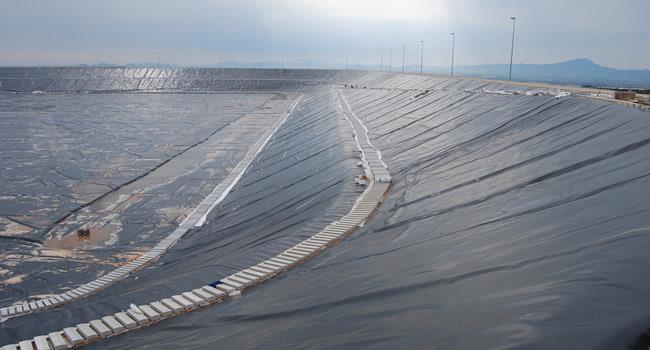Understanding the Differences Between HDPE and PVC Geomembranes: A Comprehensive Guide
When it comes to selecting the right geomembrane for your project, understanding the differences between High-Density Polyethylene (HDPE) and Polyvinyl Chloride (PVC) geomembranes is crucial. Both materials are widely used in various applications, including landfill liners, water containment, and environmental protection, but they possess distinct characteristics that can significantly impact their performance and suitability for specific projects.

Material Composition and Properties
HDPE geomembranes are made from high-density polyethylene, a thermoplastic polymer known for its strength and durability. This material is resistant to a wide range of chemicals, UV radiation, and environmental stressors, making it an excellent choice for long-term applications. HDPE geomembranes typically have a smooth surface, which aids in the prevention of algae growth and reduces friction, making them ideal for applications where water flow is a concern.
On the other hand, PVC geomembranes are composed of polyvinyl chloride, a versatile plastic that is often modified with additives to enhance its flexibility and durability. PVC geomembranes are generally more flexible than HDPE, allowing for easier installation in complex shapes and contours. However, they may not be as resistant to certain chemicals and UV exposure as HDPE, which can limit their longevity in harsh environments.
Installation and Handling
The installation process for HDPE and PVC geomembranes can vary significantly due to their material properties. HDPE geomembranes are typically available in thicker sheets, which can make them more challenging to handle and install. However, their robustness often results in fewer seams and joints, reducing the potential for leaks.

Conversely, PVC geomembranes are lighter and more flexible, making them easier to transport and install, especially in intricate designs. The flexibility of PVC allows for better adaptation to uneven surfaces, which can be a significant advantage in certain applications. However, the installation of PVC geomembranes often requires more seams, which can increase the risk of leaks if not properly sealed.
Cost Considerations
When evaluating the cost of HDPE versus PVC geomembranes, it’s essential to consider both the initial investment and the long-term value. HDPE geomembranes tend to have a higher upfront cost due to their thicker material and superior durability. However, their longevity and resistance to environmental factors can lead to lower maintenance and replacement costs over time.
PVC geomembranes, while generally more affordable initially, may require more frequent replacements or repairs, especially in harsh environments. Therefore, it’s crucial to assess the specific needs of your project and consider the total cost of ownership when making a decision.
Environmental Impact
Both HDPE and PVC geomembranes have environmental implications that should be considered. HDPE is often regarded as a more environmentally friendly option due to its recyclability and lower carbon footprint during production. In contrast, PVC production involves the use of chlorine and can release harmful dioxins if not managed properly. However, advancements in PVC manufacturing processes have led to more sustainable practices, making it a viable option for many projects.
.jpg)
Conclusion
In summary, the choice between HDPE and PVC geomembranes ultimately depends on the specific requirements of your project, including environmental conditions, budget constraints, and installation complexities. HDPE offers superior durability and chemical resistance, making it ideal for long-term applications, while PVC provides flexibility and ease of installation, suitable for projects with intricate designs. By understanding the differences between these two materials, you can make an informed decision that aligns with your project goals and ensures optimal performance.
Post time: Jun-20-2025